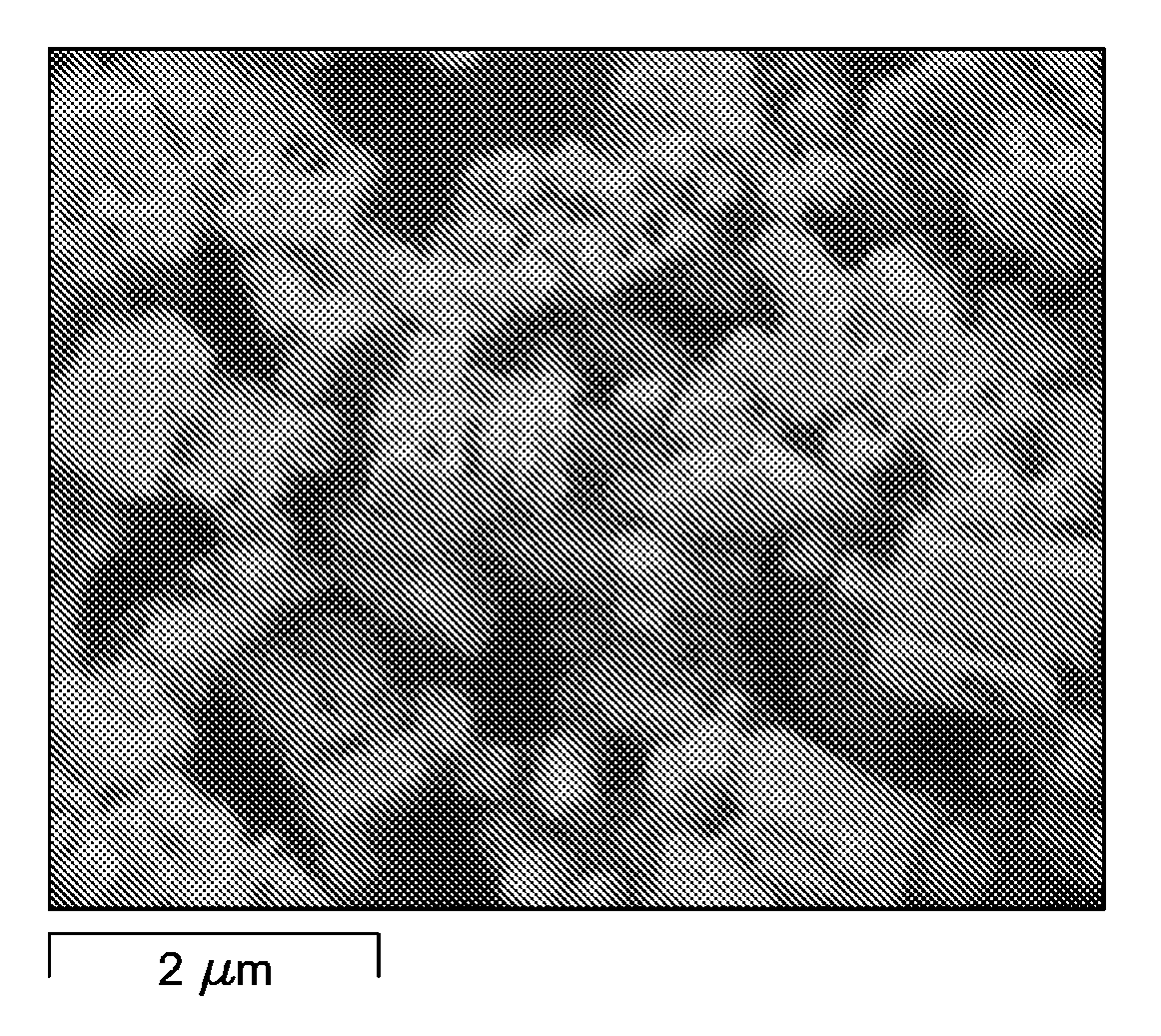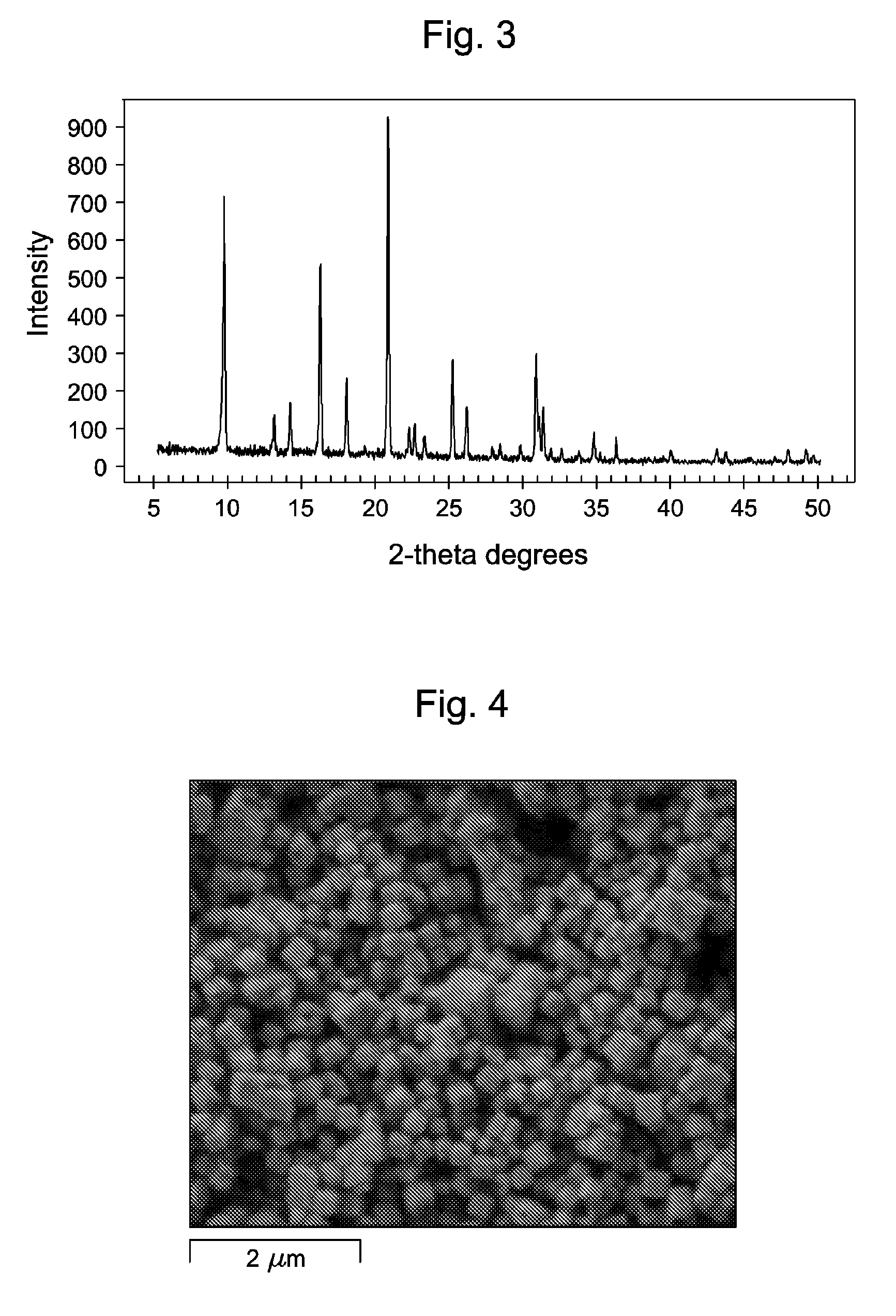Synthesis Of Chabazite-Containing Molecular Sieves And Their Use In The Conversion Of Oxygenates To Olefins
a technology of molecular sieves and oxygenates, which is applied in the direction of physical/chemical process catalysts, bulk chemical production, silicon compounds, etc., can solve the problems of limiting catalyst life, increasing the potential for undesired secondary reactions, and lowering the diffusion rate of reactants and products
- Summary
- Abstract
- Description
- Claims
- Application Information
AI Technical Summary
Benefits of technology
Problems solved by technology
Method used
Image
Examples
embodiment 1
[0073]A method of preparing a silicoaluminophosphate molecular sieve having 90% or greater CHA framework-type character, the method comprising: (a) combining an inorganic source of phosphorus and a source of silicon, optionally with a liquid mixture medium, to form a primary mixture; (b) aging the primary mixture for an aging time and under aging conditions sufficient to allow homogenization of the primary mixture, physico-chemical interaction between the source of phosphorus and the source of aluminum, or both; (c) adding a source of aluminum and optionally additional liquid mixture medium, to the aged primary mixture to form a secondary mixture; (d) (i) optionally adding an organic source of phosphorus to the secondary mixture and (ii) adding an organic template thereto, and optionally additional liquid mixture medium, to form a synthesis mixture having an Si / Al2 ratio; (e) heating said synthesis mixture at a rate of less than 10° C. / hour to a crystallization temperature within th...
embodiment 2
[0074]A method of preparing a silicoaluminophosphate molecular sieve having 90% or greater CHA framework-type character, the method comprising: (a) combining an inorganic source of phosphorus and a source of silicon, optionally with a liquid mixture medium, to form a primary mixture; (b) aging the primary mixture for an aging time and under aging conditions sufficient to allow homogenization of the primary mixture, physico-chemical interaction between the source of phosphorus and the source of aluminum, or both; (c) adding a source of aluminum and optionally additional liquid mixture medium, to the aged primary mixture to form a secondary mixture; (d) (i) optionally adding an organic source of phosphorus to the secondary mixture and (ii) adding an organic template thereto, and optionally additional liquid mixture medium, to form a synthesis mixture having an Si / Al2 ratio; (e) heating said synthesis mixture at a rate of 10° C. / hour or more to a crystallization temperature within the ...
embodiment 3
[0075]A method of preparing a silicoaluminophosphate molecular sieve having a desired template efficiency, the method comprising: (1) providing a synthesis mixture comprising a source of aluminum, a source of phosphorus, a source of silicon, and at least one organic template containing (i) a 4- to 8-membered cycloalkyl group, optionally substituted by 1-3 alkyl groups having from 1-3 carbon atoms, or (ii) a 4- to 8-membered heterocyclic group having from 1-3 heteroatoms, said heterocyclic group being optionally substituted by 1-3 alkyl groups having from 1-3 carbon atoms, and said heteroatoms in said heterocyclic groups being selected from the group consisting of O, N, and S, wherein the synthesis mixture exhibits a Si / Al2 ratio less than 0.33; and (2) inducing crystallization of a silicoaluminophosphate molecular sieve, which exhibits 90% or greater CHA framework type character, from said synthesis mixture at a crystallization temperature between 150° C. and 200° C. for a crystalli...
PUM
| Property | Measurement | Unit |
|---|---|---|
| crystallization temperature | aaaaa | aaaaa |
| crystallization temperature | aaaaa | aaaaa |
| crystallization temperature | aaaaa | aaaaa |
Abstract
Description
Claims
Application Information
 Login to View More
Login to View More - R&D
- Intellectual Property
- Life Sciences
- Materials
- Tech Scout
- Unparalleled Data Quality
- Higher Quality Content
- 60% Fewer Hallucinations
Browse by: Latest US Patents, China's latest patents, Technical Efficacy Thesaurus, Application Domain, Technology Topic, Popular Technical Reports.
© 2025 PatSnap. All rights reserved.Legal|Privacy policy|Modern Slavery Act Transparency Statement|Sitemap|About US| Contact US: help@patsnap.com



